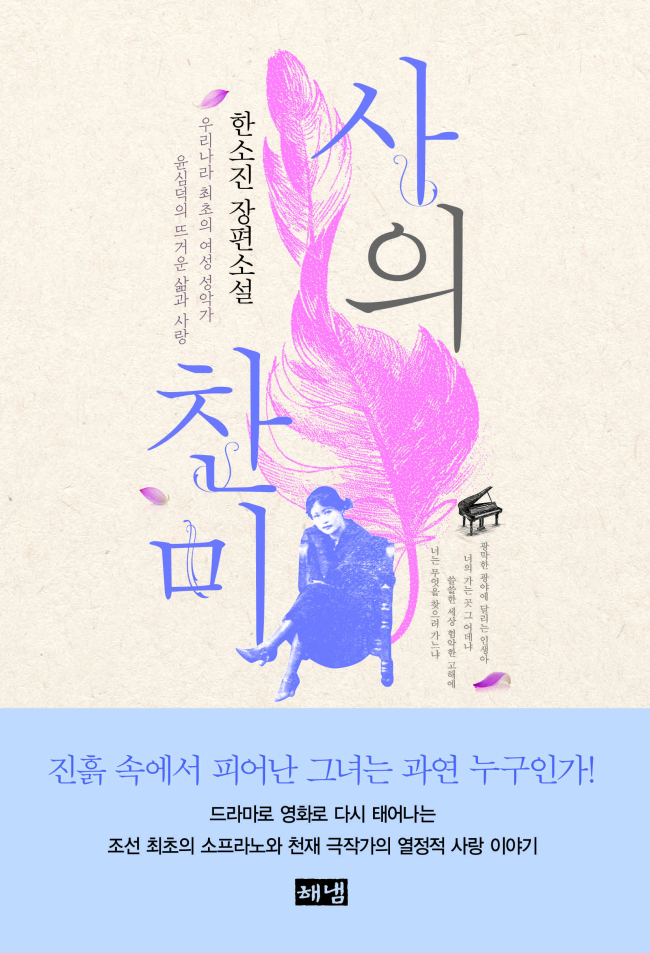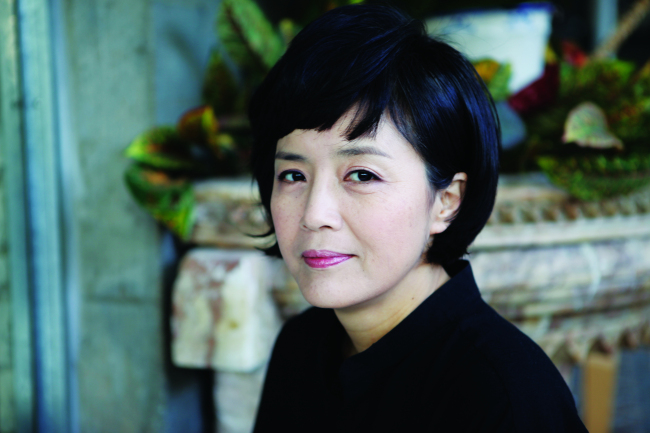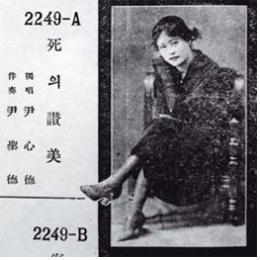‘In Praise of Death’ won’t come to life for modern readers
By Kim ArinPublished : July 19, 2018 - 17:38
Han So-jin’s “In Praise of Death” seems equipped with the enticing elements of a best-seller: a femme-fatale artist misunderstood by her generation and a tragic affair with a married man. Unfortunately, whether the novel lives up to its potential is as elusive as the unfulfilled love story.

Yun Sim-deok (1897-1926) was Korea’s first soprano and an early Korean pop figure. Her biography is often scandalized by her relationship with playwright Kim Woo-jin (1897-1926). “In Praise of Death” is Yun’s most famous piece, recorded shortly before her mystery-shrouded death at the age of 29.
The novel is a boy-meets-girl story set under Japanese colonial rule. Yun and Kim meet as Korean students studying in Japan, the former from a humble background and the latter affluent and married, both haunted by their father’s presence in their lives.
Regrettably for a work based on a famous historical figure whose story has been explored in various narrative forms including film, TV and theater, Han’s effort does not strike as particularly “novel.”
Instead of offering fresh insight into Yun’s story, the author opts for the kind of maudlin sentimentality any mediocre romantic story could fall prey to.
Han’s style overflows with superlatives, hyperbole and overwrought descriptions that confound rather than clarify the sentiment the writer tries to convey.

Take the scene, for instance, where Yun delivers a graduation performance to her class. Her audience is so moved that “sobbing could be heard here and there” and “jealous stares that had previously engulfed her were nowhere to be found.”
Readers witness Yun’s performance followed by standing ovations, with all of the audience “becoming one” and “shedding tears from their hearts.”
The two protagonists’ encounters of love are saturated with a lot of forever’s, every’s and all-encompassing this and that. Kim “felt like his heart was about to stop, just sitting right in front of her, but he tried with all his strength to comfort his crying lover. ... But the tears that broke forever continued.”
At 360 pages, the volume requires prolonged concentration from the reader. Such an endless stream of pathos can be exhausting.
In the press release, the author vaguely locates the cause of “today’s men and women struggling” with love to the “still prevalent patriarchy.” Her intention to portray her heroine as a progressive figure is implied in the promotional line: “Korea’s first woman soprano Yun Sim-duk, who was ahead of, but couldn’t surpass, her time.”
Yet Han’s attempt to create a progressive heroine falls unconvincing.
First, Yun’s brilliance is often highlighted by putting down other Korean women depicted as passive, jealous and depthless. Yun’s talent makes her an object of female jealousy and malicious rumors. She is described as having “no trace of affectation typical of Korean women.” Hated by women and desired by men, she fits the bill of the “women-hating-women” narrative.

Which brings us to the next point: misdirected hatred toward the rest of Korean womankind, save for the heroine. Yun showcases a classic case of victim blaming when she criticizes her classmates for failing to resist sexual predation by the school’s administrator. She is more infuriated by her classmates than the perpetrator, because in her eyes “they allow him to touch their bodies all he wants.”
When Kim Woo-jin’s wife, Jeong Jum-hyo, weeps while cleaning up the table her father-in-law has knocked over, all Kim sees in his wife is an example of “Korean women kowtowing like sinners without complaint,” and goes so far as to say by doing so she has “given up the force of life as a human.”
In the novel, part of Yun’s prowess as a singer derives from her sex appeal. She enters the novel clad in a sleeveless dress and heels, wearing a “seductive smile.” She is a diva who is unapologetically erotic, an object of public desire. Such a portrayal falls short of the progressive, “girl power” protagonist the author, albeit loosely, promises. It should also be noted that Yun’s professional success as a musician serves only as a subplot to the overarching theme of her romance with Kim, in whom she seeks her salvation.
Even the principal theme of romance is hobbled by a slew of rhetorical exaggerations that hinder the reader’s immersion. This is exacerbated by Kim’s off-putting tendency toward casual dismissal of women. Though Kim is a 19th century character with now-anachronistic ideas, the author’s reluctance to tone down his pejorative attitude fails to bolster his image as a romantic hero, especially for today’s readership.
There’s no question the novel deals with intriguing material. Han’s rendition of Yun Sim-deok offers at least a general introduction to readers unfamiliar with her extraordinary life and death. For Yun’s longtime fans, however, she deserves a better story.
By Kim Arin (arin@heraldcorp.com)








![[KH Explains] How should Korea adjust its trade defenses against Chinese EVs?](http://res.heraldm.com/phpwas/restmb_idxmake.php?idx=644&simg=/content/image/2024/04/15/20240415050562_0.jpg&u=20240415144419)











![[Today’s K-pop] Stray Kids to return soon: report](http://res.heraldm.com/phpwas/restmb_idxmake.php?idx=642&simg=/content/image/2024/04/16/20240416050713_0.jpg&u=)